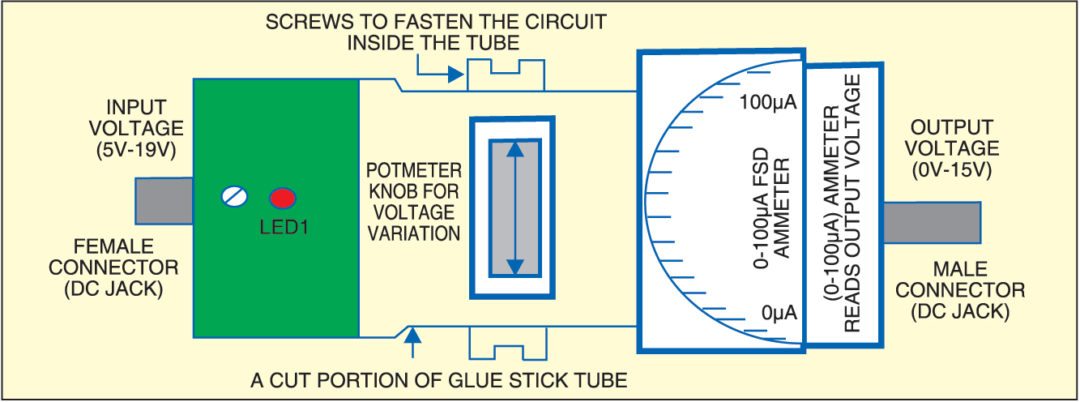 Here is a versatile power coupler that connects a device to 5V-19V DC generated from AC mains by a power adaptor. Power adaptors come in different voltage outputs like 5V (for mobile phones), 12V (for external hard drives) and 19V (for laptops). Sometimes the power adaptor may have a voltage rating higher than the required voltage. With the converter circuit given here, the adaptor can be used to power any device at a lower voltage.
Here is a versatile power coupler that connects a device to 5V-19V DC generated from AC mains by a power adaptor. Power adaptors come in different voltage outputs like 5V (for mobile phones), 12V (for external hard drives) and 19V (for laptops). Sometimes the power adaptor may have a voltage rating higher than the required voltage. With the converter circuit given here, the adaptor can be used to power any device at a lower voltage.
For instance, by using a 19V laptop adaptor, you can power a TTL circuit at 5V. There can also be other instances when one needs a 3V or 6V supply. All these and many other intermediate voltages are easily possible with this versatile converter circuit when used together with any off-hand power adaptor.

Fig. 1 shows the circuit of the DC-DC converter. Smooth reduction in the voltage is achieved using the LM317 regulator IC. The complete unit can fit inside a piece of a glue stick tube.
Adjusting variable resistor VR1 gives the desired output voltage. The output voltage is read using a 0-100µA ammeter, whose series resistance R* is chosen such that the maximum desired voltage could be covered. For instance, if full-scale deflection (FSD) current of the meter is 100 µA and you need an output voltage of up to 15V, then R* = 15/0.0001 = 150 kΩ. The desired value of R* is obtained by using 150-kilo-ohm preset VR2.
Use of a variable resistor which also has an on/off switch like the one in old radios is recommended. It will cut off the coupler from the input power supply without having to accomodate an additional switch. Also, use a heat-sink with LM317 to handle the desired amount of power.

Assemble the circuit on a small general-purpose PCB and enclose in a suitable case. Fit the entire PCB inside a glue stick tube as shown in Fig. 2. Affix the female and male connectors on the opposite ends and place the ammeter in between the stick tube. You can directly read the output voltage on the ammeter after due calibration.
Note. You can use a suitable VU meter instead of 0-100µA ammeter and calibrate accordingly.




